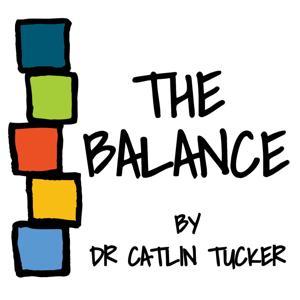Edtech ThrowdownEpisode 195: Rethinking Research: Teaching Inquiry and Integrity in the Age of AI
Welcome to the EdTech Throwdown. This is Episode 195 called Rethinking Research: Teaching Inquiry and Integrity in the Age of AI. In this episode, we will explore how the role of a teacher must change now that AI is becoming integrated in all aspects of our lives. Specifically, we’ll share 8 changes you can make to your classroom and assignments that will help encourage students to think creatively and critically in an age where it’s more important than ever. This is another episode you don’t want to miss, check it out.
Segment 1:
As my students completed their final projects, I started noticing something this year … all their work was very technically sound and met my project expectations almost perfectly. Was it too perfect?
Specific example: One of the elements of my rubric references a creative title. Usually everyone does “Chemistry of __”, but this year, they were all things like “9 Volts, 2 Electrodes, 1 Reaction: The Chemistry Behind the Charge and the Connection”. So what suddenly happened this year for me to get such great titles?
Also - When students came to me with questions about content, like the girl who needed help understanding the chemistry of Na/K pumps in cells, I found myself going to ChatGPT for the fastest resolution. Clearly they are doing the same.
Two questions arose:
- Is this research?
- Is this type of research good or bad?
Segment 2: Student Research in the Age of AI
1. Redefine Research as Inquiry, Not Just Information Gathering
AI makes facts and summaries instantly accessible, so teachers should shift the focus from finding information to asking meaningful questions. Students should be taught that good research begins with curiosity and that AI is just one of many tools in that process.
Teacher Tip: Require students to submit a “research question development log” showing how their question evolved through discussion, feedback, and exploration.
2. Teach AI Literacy as Part of Research Instruction
Students need to understand how AI tools work, their limitations, and the potential for bias or misinformation. This helps them critically evaluate what AI produces instead of blindly trusting it.
Teacher Tip: Have students compare AI-generated content with academic sources and reflect on differences in depth, credibility, and tone.
3. Require Research Process Documentation
Rather than just grading final products, assess the steps students took during the research process: topic selection, source evaluation, note-taking, outlining, etc.
Teacher Tip: Use research journals, annotated bibliographies, or reflection checkpoints to track progress and thinking.
4. Emphasize Source Evaluation Skills
AI can summarize or suggest sources, but it can’t always vet them well. Students must be taught how to evaluate a source’s credibility, purpose, and relevance—skills that AI cannot replace.
Teacher Tip: Require students to justify the inclusion of each source in their work with a brief analysis of its trustworthiness and value.
5. Assign Synthesis Over Summary
AI excels at summarizing; students must be pushed to synthesize information—connecting multiple perspectives, forming original insights, and constructing arguments.
Teacher Tip: Ask students to write or present the "So what?" of their research—what do all the sources together reveal, and what can we learn from that?
6. Use Oral Defenses or In-Class Writing
One way to ensure authentic work is to ask students to explain or recreate their findings in real-time, without AI assistance.
Teacher Tip: After submitting a research paper, have students do a brief oral defense or timed writing prompt based on their research.
7. Require Human and AI Source Transparency
Make it a norm to credit how AI tools were used in the research process. This reinforces academic honesty and helps differentiate between AI assistance and student work.
Teacher Tip: Include a required “AI Usage Statement” in which students disclose how (or if) AI contributed to their research.
8. Design Creative, Personalized, or Localized Research Tasks
Generic essay prompts are easy to outsource to AI. Unique, specific, or personally relevant tasks are harder to fake and more meaningful for students.
Teacher Tip: Frame research around local issues, class discussions, personal experiences, or school-specific themes to increase authenticity and engagement.
Edtech Throwdown:
Vote on twitter @edtechthrowdown and under the pinned post on the profile.
Segment 3: Where to Find EdTech Throwdown
Do us a few favors:
- Subscribe to the Edtech Throwdown Podcast
- Apple Podcasts
- Spotify
- Amazon Podcasts
- Stitcher
- YouTube
- Twitter
- Facebook
- Write us an Apple Podcast Review!
- Tell your friends about www.edtechthrowdown.com
- Tell your friends about the Teach Better Podcast Network
Subscribe to our Podcast Channels and Socials
- Apple Podcasts
- Spotify
- YouTube
- Twitter (@edtechthrowdown)
- Facebook
- Instagram
Connect with us on Social Media
Guise’s Social Media
- Twitter (@guisegotteched)
- LinkedIn
Nick’s Social Media
Music Credits:
- Intro and Outro Music- American Idle - RKVC
- Segment Identifiers- Duck in the Alley - TrackTribe
- Edtech Throwdown- Born a Rockstar (Instrumental) - NEFEX
Need a Presenter?
As experienced presenters and content creators, you can contact Nick and Guise to speak at your school, event, or conference. They can customize a workshop that meets your organization’s unique time and content needs. While no topic is out of bounds, we are best known for sessions on:
- AI For Teachers, Admin, and Parents
- 1:1 Chromebook Integration
- EdTech Throwdown
- TargetED Learning
- Gamification (Badge Systems)
- Game-Based Learning (Escape Rooms, Amazing Race, and more)
- Google apps and extensions
- Personalized learning and Choice Boards
- Teacher productivity (Lesson Planning, Online Grading. and Feedback)
- Digital content creation
- Student Podcasting
- Screencasting
- Flipped Classroom
- Student-Centered Learning




































